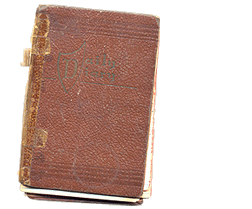
if you want to own a car to ride!”
September 2, 1945: “BRITISH ASSERT 'VOLKSWAGON' HAS GOOD POINTS: The German peoples' auto on which hundreds of thousands of Germans gave a down payment and received only Hitler's promise in return, has been tried out in Britain and has received favorable reports by most of the motoring experts writing in the British newspapers. They say that altho its finish and standard of engineering are far below British light cars, the volkswagon suspension system with ... rear engine, road-worthiness, and economy in gasoline could well be incorporated in a British automobile to sell below $400.”
The Beetle went on to become a huge success and the longest-running car design in automotive history. But right after the war, any future the “peoples' car” had was literally almost blown to pieces:
The Volkswagen factory was handed over by the Americans to British control in 1945; it was to be dismantled and shipped to Britain. Thankfully for Volkswagen, no British car manufacturer was interested in the factory; "the vehicle does not meet the fundamental technical requirement of a motor-car ... it is quite unattractive to the average buyer ... To build the car commercially would be a completely uneconomic enterprise."The factory survived by producing cars for the British Army instead. Allied dismantling policy changed in late 1946 to mid 1947, although heavy industry continued to be dismantled until 1951. In March 1947, Herbert Hoover helped change policy by stating "There is the illusion that the New Germany left after the annexations can be reduced to a 'pastoral state'. It cannot be done unless we exterminate or move 25,000,000 people out of it."The re-opening of the factory is largely accredited to British Army officer Major Ivan Hirst (1916–2000). Hirst was ordered to take control of the heavily bombed factory, which the Americans had captured. His first task was to remove an unexploded bomb which had fallen through the roof and lodged itself between some pieces of irreplaceable production equipment; if the bomb had exploded, the Beetle's fate would have been sealed.Hirst persuaded the British military to order 20,000 of the cars, and by 1946 the factory was producing 1,000 cars a month. During this period, the car reverted to its original name of Volkswagen and the town was renamed Wolfsburg. The first 1,785 Beetles were made in 1945.

No comments:
Post a Comment